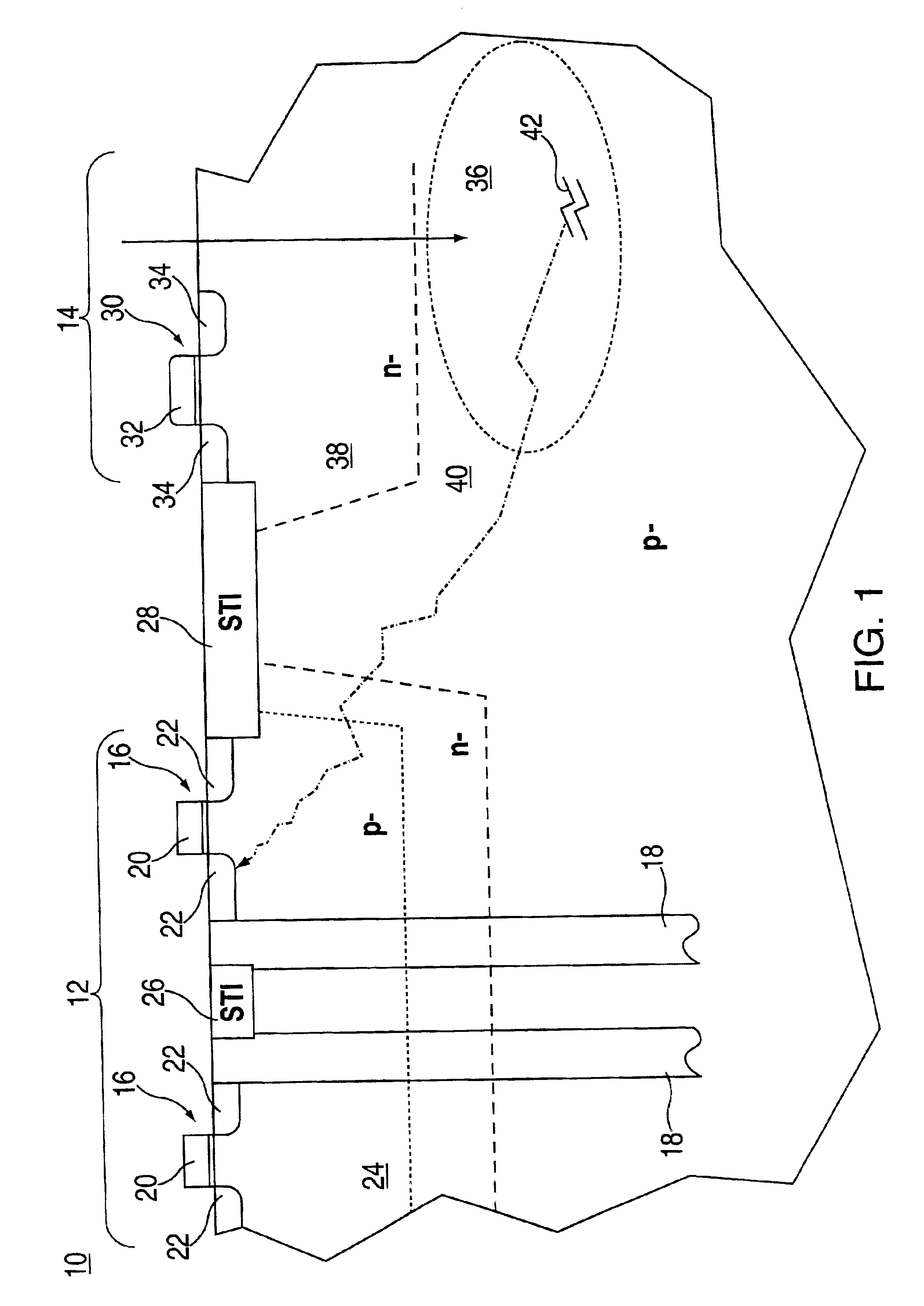Deep trench isolation of embedded DRAM for improved latch-up immunity
a technology of embedded dram and deep trench isolation, which is applied in the direction of semiconductor devices, electrical equipment, transistors, etc., can solve the problems of constant need to increase the density of devices, damage to cmos devices, and failure of devices if not addressed
- Summary
- Abstract
- Description
- Claims
- Application Information
AI Technical Summary
Benefits of technology
Problems solved by technology
Method used
Image
Examples
Embodiment Construction
[0013]Referring initially to FIG. 1, there is shown a cross sectional view of an existing embedded DRAM (eDRAM) device 10. The eDRAM device 10 includes a DRAM array region 12 (in which an array of individual DRAM storage cells are configured), as well as a logic circuit region 14 in which various logic circuitry is located. Generally speaking, the DRAM array region 12 includes a number of individual DRAM storage cells each having an access transistor 16 and a trench storage capacitor 18. The access transistors 16 further include a gate 20, as well as source / drain diffusion areas 22. In the example illustrated, diffusion areas 22 are n-type diffusions formed within in a lightly doped p-well 24. However, it should be understood that the diffusions may also be p-type formed within an n-well. When activated through a corresponding wordline (not shown), a given gate 20 of an access transistor 16 couples the corresponding trench capacitor 18 to a bitline (not shown) connected to one of th...
PUM
 Login to View More
Login to View More Abstract
Description
Claims
Application Information
 Login to View More
Login to View More - R&D
- Intellectual Property
- Life Sciences
- Materials
- Tech Scout
- Unparalleled Data Quality
- Higher Quality Content
- 60% Fewer Hallucinations
Browse by: Latest US Patents, China's latest patents, Technical Efficacy Thesaurus, Application Domain, Technology Topic, Popular Technical Reports.
© 2025 PatSnap. All rights reserved.Legal|Privacy policy|Modern Slavery Act Transparency Statement|Sitemap|About US| Contact US: help@patsnap.com



